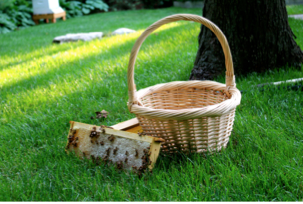By Katherine Schultz ’15
Since 2007, billions of bees have been lost from colonies. Population loss reached 36 percent in 2007 and new research shows the loss of managed honeybee colonies from all causes has dropped to 23.2 percent nationwide. While the numbers are heading in the right direction, the problem is far from over. Colony Collapse Disorder (CCD) is the name that has been given to what seems to be the most serious die-off of honeybees in decades. Loss has been reported across nearly all of the United States, as well as countries overseas. CCD impacts both commercial beekeepers and hobbyists.
Many blame genetically modified crops, cellular phone towers and high voltage transmission line`s for the disappearance. Genetically modified crops in particular have the possibility of resulting in a poor diet for the bees and reducing their immune system. The only well known enemies of the bee world are varroa mite, but they do not appear to be sole reason for the unusually high losses seen. Many scientists believe that it is a combination of parasites (mites), pathogens, pesticides, and management stresses.
There are so many crops that require pollinators, so the losses from CCD will have a dramatic impact on the human food chain. Beekeepers provide honeybees to farmers all around the country to pollinate the crops that wind up in our supermarkets. Honeybees are a principal pollinator of hundreds of fruits, vegetables, flowers and nuts. Despite the fact that we know the potential harms and consequences of CCD, we have yet to know the actual causes of the disorder.
One of the most sensible actions to take to compact the decline of the honeybee colonies is to become a beekeeper, and reintroduce honeybees in different areas around the world. This idea has greatly impacted my family. After reading various articles on CCD, my family decided to get two hives in 2013. Unfortunately, due to the harsh winter, the two colonies did not survive into the spring. This past year, we have graduated to three hives, and the bees appear to be flourishing. We have positioned the bees right next to our vegetable garden in order to promote the growth of our fruits and vegetables as well. As a result of the implementation of the bees back in 2013, our garden has thrived and grown exponentially since 2012, when we put the garden in.
Below are two pictures I took this summer of some of the honeybees, and my mother with one of our hives. The honeybees have been an amazing addition to both the vegetable garden and the flowers around our house. I have been able to see first hand the small impact honeybees have on our environment, and understand the negative implications CCD can have on the future of agriculture around the United States and internationally.



